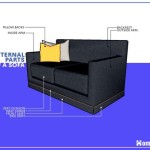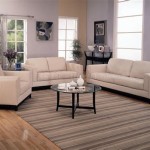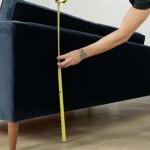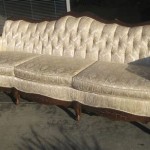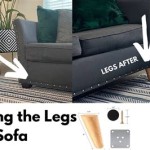Plastic Feet for Sofas: A Comprehensive Guide
Plastic feet are a common component found on the underside of most sofas. They serve a variety of crucial functions, contributing to both the structural integrity and aesthetic appeal of the furniture piece. Understanding the different types, materials, and considerations involved in selecting plastic feet can help consumers make informed decisions when purchasing new furniture or replacing existing components.
One primary function of sofa feet is to elevate the frame off the floor. This elevation provides several benefits. Firstly, it protects the sofa's base from moisture damage, particularly relevant in humid climates or areas prone to spills. Secondly, it allows for airflow beneath the sofa, preventing the accumulation of dust and allergens and mitigating the risk of mold and mildew growth. Finally, this elevation facilitates easier cleaning underneath the furniture.
Beyond protection and hygiene, plastic feet also play a crucial role in weight distribution. Sofas, especially those designed for multiple occupants, can bear significant weight. Properly designed and installed feet distribute this weight evenly, preventing undue stress on the frame and extending the lifespan of the furniture. This even distribution also prevents the sofa from sagging or becoming uneven over time.
Aesthetics are another important consideration. Plastic feet are available in a wide array of styles, shapes, and colors, allowing manufacturers and consumers to customize the sofa's appearance. From simple, rounded designs to more ornate or angular options, the feet can complement the overall design aesthetic, adding a subtle yet significant touch to the furniture's visual appeal. The choice of foot style can influence the perceived height and overall profile of the sofa.
Several factors influence the selection of appropriate plastic feet for a sofa. The weight capacity of the feet is paramount. Selecting feet that can adequately support the weight of the sofa, including potential occupants, is essential for stability and safety. The height of the feet also requires consideration. Taller feet provide greater clearance beneath the sofa, facilitating easier cleaning and airflow, while shorter feet offer a lower profile and a different aesthetic.
The type of flooring on which the sofa will rest also influences the choice of feet. Hardwood floors, for example, may benefit from feet with softer padding or glides to prevent scratching. Carpeted surfaces might require taller feet to prevent the sofa from sinking too deeply into the carpet pile and hindering airflow. Ultimately, the choice of foot style should complement both the sofa's design and the characteristics of the flooring.
Various types of plastic are used in the manufacturing of sofa feet. Polyethylene (PE) is a common choice due to its durability, affordability, and resistance to moisture and impact. Polypropylene (PP) offers similar benefits and is known for its rigidity and high melting point. Other options include nylon, known for its strength and resistance to abrasion, and ABS (acrylonitrile butadiene styrene), a versatile plastic offering a balance of strength, rigidity, and impact resistance. The specific type of plastic used influences the foot's durability, load-bearing capacity, and overall performance.
Installation methods for plastic feet vary depending on the design of the sofa and the type of feet. Some feet are designed to screw directly into the sofa frame, while others may utilize a socket or clip-on mechanism. It is crucial to ensure that the feet are securely attached to the frame to maintain stability and prevent damage to both the sofa and the flooring. Proper installation is essential for the longevity and performance of the feet.
Maintaining plastic sofa feet is relatively straightforward. Regular cleaning with a damp cloth can remove dust and debris, preserving the appearance of the feet and preventing the buildup of grime. Inspecting the feet periodically for signs of wear and tear, such as cracks or loose attachments, is also recommended. Promptly addressing any issues can prevent further damage and ensure the continued stability and functionality of the sofa.
Replacing worn or damaged plastic feet is often a simple process. Many furniture retailers and hardware stores carry a wide selection of replacement feet. When selecting replacements, it is essential to consider the weight capacity, height, and attachment method to ensure compatibility with the existing sofa frame. Matching the style and color of the original feet can maintain the aesthetic consistency of the furniture piece.
In conclusion, plastic feet are more than just a minor component of a sofa. They play a vital role in protecting the furniture, ensuring stability, and enhancing its aesthetic appeal. Understanding the various types, materials, and considerations involved in selecting and maintaining plastic feet can help consumers make informed decisions and ensure the longevity of their furniture investment.

Plastic Stem Sofa Feet Sofa008

Threaded Sofa Feet Sofa050

4 Medium 40mm Black Plastic Sofa Glides Furniture Feet Chairs Beds Divan

Fixing Sofa Feet Sofa036

Plastic Furniture Bed Divan Base Glide Feet Replacement Sofa Chair Legs

Threaded Sofa Feet Sofa052

Plastic Stem Sofa Feet Sofa020

40mm Furniture Foot Abc Plastics Cc

Plastic Stem Sofa Feet Sofa008

Uniquella 3 Inch Legs 4 Pcs Plastic Sofa Round Couch M8 Hanger Bolts In Buy

